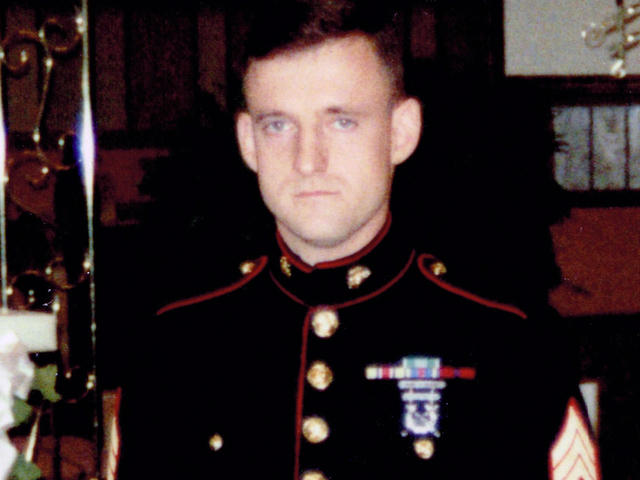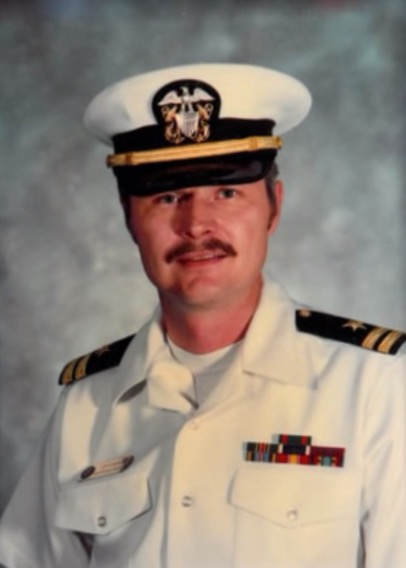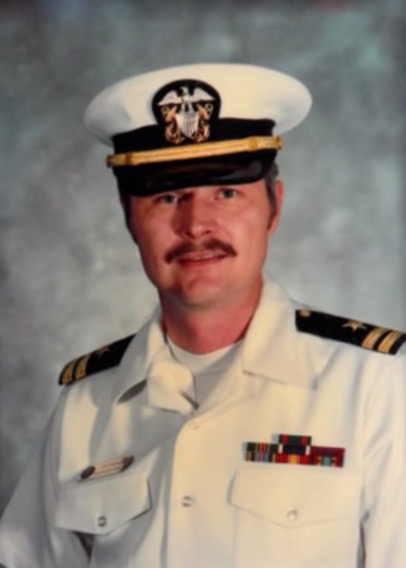
In November 1989, James Glass married Wendy McAdory. They were a close knit family and did a lot of things together. Thirty-three years earlier, James Glass was growing up in Lousiana; life had dealt him a tough hand right from the start. James’ father died when James was only five years old. He died of emphysema; he smoked three packs of cigarettes a day. James’ mother struggled to cope raising two children on her own. She eventually met another man and he turned out to be abusive to the family. At one point, James was solely responsible for taking care of his brother. Then one day, a teacher noticed something was wrong and asked the boys what was going on. As a result of their confessions, the teacher called Child Protective Services. James and his brother Robert were taken from the home and placed with foster home. For the first time in a long time, they both felt safe and saw the light at the end of the tunnel. They lived in a wonderful foster home and their foster family ended up adopting the two boys.
James’ love of aviation lead him to join the military when he was twenty-four (24) years old. Unfortunately, his eyesight disqualified him from becoming a pilot so he did the next best thing and became an air traffic controller with the Marine Corps. In the spring of 1989, James was on weekend leave and decided to pay a long overdue visit with his family. At the time, James was stationed in Cherry Point, North Carolina, so James went with his grandfather to look at a truck he wanted to purchase in Pennsylvania, And this is where James met Wendy McAdory. James fell hard and fast for Wendy; they married a month later. The pair had a big wedding and by 1991, they welcomed a daughter Nicole to the family. Two years later their second daughter Andrea was born. James family meant the world to him; he loved his girls. Five years into his marriage with Wendy, he thought he had it all. Wendy was a great mother.
But in the fall of 1994, everything changed when they were relocated to a military base in Japan. James was up for adventure but Wendy not so much. Having two children was difficult and the transition was hard; Wendy struggled to adapt. Wendy stayed home and took care of the children and James was always at work. While in Japan, James was deployed to Korea and Australia, so he was gone and Wendy was left alone with the two kids. She became a stay-at-home mom but she wanted to be a working mom; Wendy was resentful. Being married to a military man was not easy because his job took precedence. Wendy felt like she wasn’t a priority, and she wasn’t, so she turned to someone other than James about her problems and eventually started having an affair with a married man. News of the alleged affair got back to James’ chain of command and when they confronted him about the affair, he denied it emphatically.
James was unaware Wendy was seeing someone else. But Wendy continued to carry on with the affair, maybe to fill a void or get the attention she was missing at home. Adultery is fairly common, especially in the military, but most don’t talk about it. While James was in the dark, he was transferred to a new base in Yuma, Arizona; this transfer ended Wendy’s affair. Wendy welcomed the move back to stateside from Japan. The family quickly began to build a new community of friends, including neighbors Larry Framness and his wife Shelly. Larry was also in the Marines; his wife took care of the children. And they had girls close to the ages of the Glass’ two daughters. But once again the boredom kicked in when Wendy realized she had to be a stay-at-home mom because James was working all the time. James was the senior enlisted Marine in charge at his new position on the training base so he worked a lot of long hours. But then September 11th occurred and James was tasked with deployments with the Marines.
James Glass was first sent to Kuwait so they could respond quickly to any threats of weapons of mass destruction. While James was deployed overseas, Wendy was hit hard with a personal tragedy of her own; her mother died. Wendy’s mom was her rock and she fell into a terrible depression and had a hard time recovering from it. She talked to her mother everyday. She tried to lean on James but James had to focus on what he was dealing with in Kuwait. He was deployed and working in harm’s way so his deployment had to be the priority. Wendy found solace from her neighbor Larry Framness. They had a genuine friendship and spent time with Wendy’s two daughters. Larry was there to help when James couldn’t. Larry was willing to listen and became her confidant. After months of being away, James returned and was ready to settle into a regular routine in Arizona. But his homecoming was welcomed with a shocking allegation.
Mrs. Framness complained to the command that she believed her husband and Wendy Glass were engaged in an adulterous affair. Adultery is a chargeable and punishable crime in the Uniform Code of Military Justice (UCMJ). Adultery in the military is illegal because service members need to focus on the mission; they shouldn’t have to worry about someone wooing their wife (or husband) while they are gone. Rumors about the affair were making their rounds on base. Others noticed when James was gone, Larry was at the house. The allegations were investigated and the command interviewed James Glass. Again, he denied it because he could not fathom that Wendy would have an affair. James pushed back against the false allegations. Both Wendy and Larry denied the allegations claiming it was purely a friendship. And, investigators didn’t have any reason to doubt them. Larry Framness had a clean career and nobody would admit any wrong doing, so the March 2002 investigation stopped there.
Then one day, James learned first hand that the rumors of an alleged affair were true. James went home early to surprise his wife at home. Nobody appeared to be home but when James went upstairs, he witnessed Wendy walk out of their bedroom naked and she was totally surprised by James. She asked him to make her a sandwich and she would be right down but James felt like something was wrong so he entered the bedroom and found Larry hiding on the other side of his bed. James said after he found Larry, he left, got in his car, and drove. His first thought was to go to the Command but Wendy called and asked him to come back to the house. Wendy told him that she cheated on him because he was never home. James was floored she turned things around and made herself out to be the victim. She said she was sorry and wanted to make things work because she loved him. James was sad and the hurt ran deep but the love of his family ran deeper; James stayed because he was scared to lose his children.
James was in a deployable status with the Marines and if Wendy left and took the children, he might not see them as often. He told Wendy he wanted to work it out and agreed to keep the indiscretions to himself; Wendy agreed to stop the affair. But Larry’s wife wasn’t as forgiving. Shelly divorced Larry and moved back to Montana with their kids. Larry was devastated. James and Wendy started seeing a counselor but the trust was gone and difficult to get it back. Their children felt like they loved each other but they weren’t in love. Slowly, things between the couple improved. The two overcame a traumatic event but privately James still had suspicion and hurt to work through. James was deployed again and when he returned in November 2002, Wendy planned a romantic trip to a cabin in the Laguna mountains. James felt like things were getting back to normal and this was a new beginning for James and Wendy.

On their romantic trip, James was feeling jetlagged and tired but later on he had a hard time getting to sleep because of the time difference. Wendy suggested he take a pill to help him get to sleep. James took the pill but it had very little effect on him. The next day they returned home feeling like the effort fell flat. James tried to rebuild the trust and the faith but things only got worse for Wendy and James when James was deployed again to Kuwait. This deployment was very stressful and there was no telling when James would return home this time. James tried to be mindful of staying more connected with Wendy back home. Two weeks into his deployment to Kuwait, James ran into Larry Framness. They both attended regular meetings together so it was impossible to avoid him. James was glad Larry was deployed because he didn’t have to worry about him spending time with Wendy. Larry apologized to James and said he had a lapse in judgment.
James’ Marine unit deployed to Camp Snake Pit, Iraq for thirty (30) days and when they returned to Kuwait, he was tired and went to bed. Larry woke him up and told him he noticed some suspicious activity near the base and wanted James to observe with him. On May 14, 2003, James Glass was lead to a guard shack/bunker where the two stayed for a few minutes; but he didn’t see what he thought he was going to see. The next thing he knows, an explosion went off. James was blown against the side of the building. James survived but he couldn’t see, he couldn’t hear, and there was blood all over him. James thought it was a rocket attack on the military base. The explosion lead to an investigation that revealed a sinister plot months in the making. Military officials scrambled to find out what happened. A few days later, James learned he was targeted.
James was lucky to be alive and the water bottles nearby absorbed a great deal of the shock of the explosion. James was in survival mode after it happened and he walked out of the bunker to get medical help. He was met by Larry with a shocked look on his face. Larry helped him get to the medical tent. James was airlifted to a hospital in Spain where he underwent surgery to remove shrapnel from his arms, necks, and legs. Back in Yuma, Wendy broke the shocking news to their two daughters; she assured them he was going to be okay. Meanwhile in Kuwait, investigators started interviewing witnesses. They started with Larry Framness who claimed that an Al Qaida operative must have done it. But the investigators were skeptical given they were in Kuwait because it wasn’t considered a dangerous place like Iraq. They also reminded him the intelligence gathering operatives didn’t have anything on record to back his theory up.
Investigators started putting the pressure on Larry Framness and he broke. He told them he threw a grenade in the bunker in an attempt to kill James so he could be with Wendy back in California. Larry admitted that the plan had been months in the making while James thought the affair between Larry and Wendy was something in the past. But the affair wasn’t over, not by a long shot. Larry and Wendy determined James was worth more dead than alive; they planned to murder him for the insurance money. The two stood to gain over $500,000 from the insurance policies. In the search, investigators found a note that appeared to be written by Wendy to Larry which basically itemized every life insurance policy and what they planned to purchase. Larry was taken into police custody while military investigators questioned Wendy Glass in Yuma. Wendy denied any involvement and told them she was unhappy but would never kill him.
Wendy denied any involvement in the murder attempt and portrayed herself as a good military spouse with an injured husband. But while military investigators were at her house, they started noticing things that belonged to Larry Framness. They asked her for permission to search the entire residence and found e-mails between Larry and Wendy that were very incriminating. They were professing their love for one another and talking about future plans. With the evidence piling up, Wendy had to make a confession of her own. She indicated that if she divorced her husband, he would take the children. And Larry had convinced her that she could be very happy with him with all that insurance money. A week after the explosion, Wendy was arrested and charged with conspiracy to commit murder. As James recovered from surgery, he learned the devastating news. James’ Commanding Officer told him Wendy and Larry did it.
James was informed that Larry and Wendy were both arrested for conspiring to murder him. In James’ mind, everything clicked and the sense of betrayal he experienced before was magnified. James’ whole life changed that day but he decided he was not going to let what they did to him define his life. After James got out of the hospital, he filed for divorce. On January 27, 2004, an article 32 hearing was held and James was a witness. At this hearing, James learned that the grenade was not the first attempt on his life. Wendy and Larry had conspired to murder James in the Laguna mountains in California. They wanted to get him drunk, put him in a moving vehicle, and launch him over a cliff. Unbeknownst to James, Larry was in the area to assist with the the murder. James realized the pill Wendy gave him was part of their sinister plot. Thankfully, it had zero effect on him. James’ children learned about the case on television.
Marine Larry Framness was found guilty and sentenced to twenty-five (25) years to life in prison for conspiracy to commit murder. Wendy Glass took a plea deal with prosecutors and was sentenced to seven (7) years in prison in exchange for testifying against Larry Framness. Per her plea agreement, Wendy was required to admit her full culpability in the conspiracy and she did so. One of James and Wendy’s daughters wanted to know why their mom would try and kill her dad so she did some research, and learned the hard way. Their other daughter talked about how difficult it was to transition from their mom being there all the time to now being gone. In January 2005, James’ divorce from Wendy was finalized. While reflecting back on the marriage, James said he doesn’t regret his marriage to Wendy because they had a lot of good years and two beautiful daughters, but it will take him a long time to trust anyone ever again.
Source: Collateral Damage, Cold Hearted, Investigation Discovery
Investigation Discovery:
James is a Marine living the American dream. His duty often takes him away from home, but he still provides for his family. While away his wife seeks companionship closer to home. A sordid affair culminates in an explosive revelation. -Collateral Damage, Cold Hearted (S1,E1)
Editor’s note: With a cable subscription, you can download the free ID Go app and watch all of the Investigation Discovery programming at your convenience. And for those who do not have cable, you can watch “unlocked” episodes on the ID Go app including the latest premieres. Download the ID Go app and binge away. For those who prefer commercial free programming during your binge session, Prime Video has an ID channel: ‘True Crime Files by Investigation Discovery” available for $2.99 a month. It’s a compilation of older seasons but totally worth the cost if you are a true crime addict.
Related Links:
Marine Jailed in Alleged Murder Plot
Wife and Lover Held over Plot to Kill US Marine
Marine Indicted for Allegedly Plotting to Kill Fellow Officer
Marine in Kuwait Grenade Attack Indicted
Wife and marine lover charged with trying to murder husband
U.S. Marine Corps officer indicted for murder conspiracy
Marine’s lover testifies at hearing on grenade attack
Marine Pleads Guilty to Attempted Murder
Marine Gets Life in Prison for Murder Plot
Officer Gets Life Term for Attempted Murder
Marine sentenced to life in prison for murder plot
Marine’s wife pleads guilty to murder conspiracy
Marine’s Wife in Arizona Pleads Guilty to Conspiracy in Attempt to Have Him Killed in Kuwait
Marine asks leniency for wife who plotted against him
Wendy Glass and her lover, Larry Framness, have been convicted of unsuccessfully attempting to murder her husband, James Glass, three times.
United States v. Larry Framness (U.S. Navy-Marine Corps Criminal Court of Appeals, 2007)
NCIS probe of U.S. Marine’s attempted murder in Kuwait reveals a conspiracy of secrets and lies
Collateral Damage | Cold Hearted | Investigation Discovery (S1,E1)
Collateral Damage | Cold Hearted | Investigation Discovery (website)





